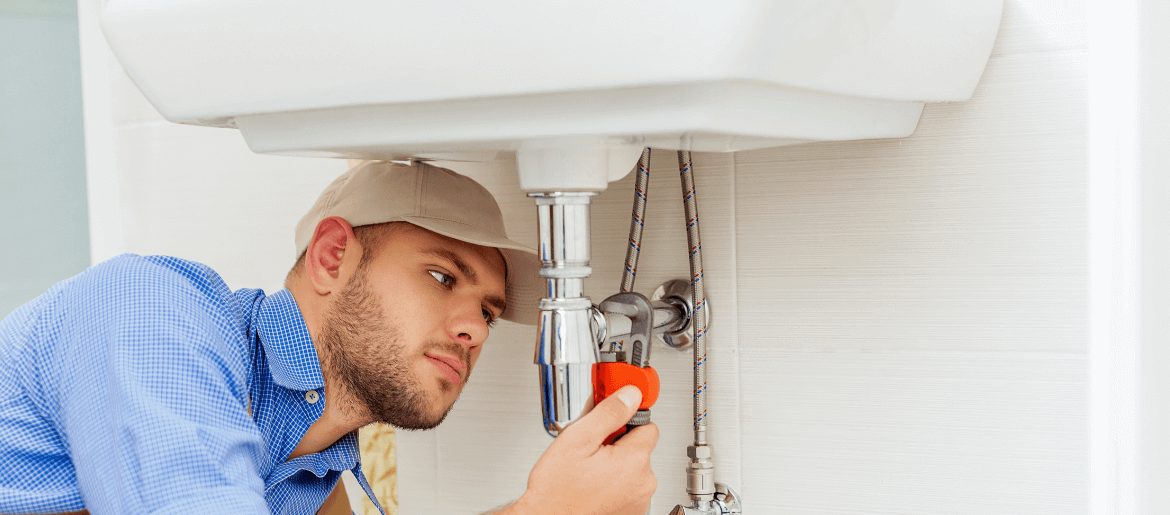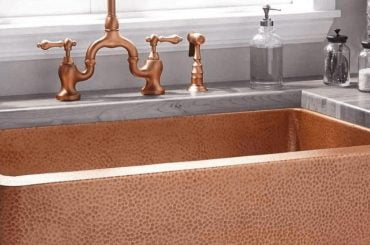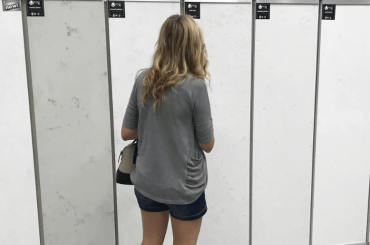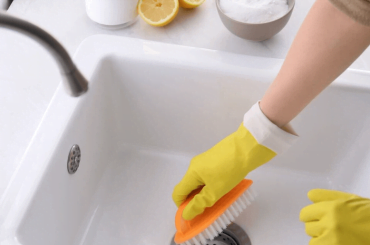Have you ever wondered what a sink flange is? Most people have never heard of this term before and don’t know what it is. A sink flange is the part of your sink that connects to the drain pipe. If your sink flange is damaged or missing, it can cause leaks and other problems with your plumbing system.
In this blog post, we’ll discuss what a sink flange is, how it’s installed and common problems that can occur with a sink flange. We’ll also provide tips for keeping your sink flange in good condition. So keep reading!
Sink flange
Sink flange is a circular fitting that attaches the drain stopper to the sink basin. It seals around the drain hole, preventing any water or debris from entering the pipe below. Most modern sinks are equipped with a built-in flange but older sinks may not have one and require the installation of an aftermarket flange.
The flange is usually made from metal, plastic or rubber and can come in a variety of sizes to fit any drain opening. Sink flanges are an essential part of the sink and must be properly installed for optimal performance. Improper installation can lead to leaks, water damage and other plumbing issues.
What does sink flange do?
Sink flanges are an important part of the plumbing system in a home or commercial space. They provide a secure connection between the sink and the plumbing pipes, ensuring that no water can leak out and cause damage to surrounding areas.
Additionally, they come in different sizes and styles, allowing you to choose the best one for your particular space. They also help provide a nice, uniform look since the flanges match up with the sink and the plumbing pipes. When installed properly, they can last for many years and help keep your home or business safe from water damage.
How to Install or Replace a Sink Drain Flange?
How to remove old sink flange?
- Ensure that the water supply is shut off and the drain is plugged or covered to prevent any debris from going down the drain.
- Using pliers, carefully remove any mounting nuts that keep the flange attached to the sink. If you find any additional hardware, such as screws or bolts, remove those too.
- With your hands, gently but firmly pull the flange up and away from the sink drain hole.
- If the flange is particularly stubborn, you may need to use a flat-head screwdriver to loosen it from its position around the drain pipe.
- Using a rag or paper towel, wipe away any excess putty or debris that may have accumulated around the sink drain.
- Inspect the flange for any damage, rust or corrosion and replace it with a new one if necessary.
- Clean up any remaining residue from the removal process, then you’re done! Congratulations on successfully removing the sink flange!
How to install a new sink flange?
Installing a new sink flange is an essential step in completing any plumbing job. Before beginning, make sure that you have all the necessary tools and supplies at hand.
- Turn off the water supply to the sink before starting any work on it. Unscrew or loosen the bolts connecting your existing sink flange to the sink.
- Carefully pull the old flange out of the drain opening and dispose of it properly.
- Clean the inside edges of the drain opening to remove any debris or build-up that may have accumulated over time.
- Take your new sink flange and make sure it fits snugly into the drain opening.
- If you’re replacing the flange, make sure to use the plumber’s putty around the drainpipe and underside of the new flange before securing it in place with any mounting hardware.
- Secure the flange to the sink with bolts and nuts. Tighten them securely but make sure not to over tighten them, as this may damage the flange or sink itself.
- Turn the water supply back on and check for any leaks around the new flange. If there are any, tighten the nuts or bolts further until the leak is stopped.
- Finally, check all connections to make sure everything is securely fastened and there are no leaks present before you can use your sink again.
Also Read: Why Does My Kitchen Sink Smell Like Sewage?
How to clean a sink flange?
Cleaning a sink flange is essential for keeping your sink in top condition. Here are some tips to help you keep your sink flange clean and working properly:
- Use a stiff-bristled brush to remove any debris or buildup from the sink flange.
- To remove tough stains or sticky residue, use a mixture of equal parts vinegar and baking soda. Sprinkle it on the flange and let it sit for 10 minutes before scrubbing with a brush.
- Use a damp cloth to wipe down any excess solution left behind after scrubbing.
- If necessary, use a metal brush to dislodge any stuck-on food particles of sediment.
- Rinse the flange with clean water and wipe it down with a soft cloth to remove any remaining residue.
- Finally, spray the sink flange with stainless steel cleaner or polish as needed for extra shine and protection.
Following these steps can help keep your sink flange clean and free of buildup for years to come!
Did You Know: How To Plunge Sink With Garbage Disposal?
Common problems with sink flanges and how to fix them?
- Leaky sink flange: A leaky sink flange is often caused by worn-out rubber seals or missing screws. To fix this problem, first, check the gasket for tears and wear. If it is damaged, replace it with a new one. Next, use a plumber’s putty to reseal the sink flange. Finally, tighten the screws to ensure a tight seal.
- Clogged sink flange: A clogged sink flange can be caused by dirt and debris buildup in the drain line or by incorrect installation of your garbage disposal unit. First, remove any blockages from the pipes leading to the sink flange. If this doesn’t help, then, use a power washer to unclog the drain line.
- Corroded sink flange: An old or corroded sink flange can lead to leaks. To fix this problem, replace the old flange with a new one and make sure to properly seal it using a plumber’s putty or silicone caulk. Additionally, you may also need to replace the pipe leading to the sink flange if it is corroded as well.
- Wobbly sink flange: A wobbly sink flange is usually caused by loose screws or a poor seal. To fix this, use a screwdriver to tighten the screws and make sure they are properly sealed.
By taking the necessary steps to fix these common sink flange problems, you can ensure that your sink remains securely in place and free from leaks. If you’re not comfortable tackling these problems yourself, contact a professional plumber for assistance.
Tips for keeping your sink flange in good condition
- Clean the sink flange regularly with mild detergent and warm water to remove dirt, grease and any other buildup.
- To avoid corrosion or rusting, keep the sink flange dry at all times when not in use. Make sure to wipe away any excess moisture around the flange after washing dishes.
- If the flange is made of metal, you may want to apply a thin layer of cooking oil or mineral oil to protect it from rust and other damage.
- To prevent clogs and leaks, use a toothbrush or rag to clean the area around the sink flange where the pipes meet the wall. Make sure to remove any debris or dirt from the pipes before replacing them.
- If you notice that your sink flange is beginning to corrode, replace it as soon as possible with a new one. Corroded flanges can cause leaks and water damage in your home.
- Finally, make sure to check the tightness of the screws and nuts that hold the flange in place periodically to ensure that they are secure. Tightening these components can prevent leaks and other problems.
FAQs – Sink Flange
What does a drain flange look like?
A drain flange is a two-piece fitting that connects the sink drain pipe to the tailpiece, which extends down from the bottom of the sink. It is typically made up of a metal ring and polyvinyl chloride (PVC) or plastic gasket.
The drain flange includes a nut that slides over the tailpiece and is secured with a washer and a nut. The flange also includes a lip or rim that sits on the sink’s underside and creates an airtight seal when the gasket is tightened to the sink. Some drain flanges include a stopper, which helps to prevent debris from entering the drainpipe.
How do you seal a sink flange?
The most common method of sealing a sink flange is with a plumber’s putty, which is soft and malleable when mixed with a small amount of water.
- First, apply the plumber’s putty around the base of the sink flange. Ensure that you apply enough putty to create a snug fit between the sink and the flange.
- Once this is done, press down on the putty to provide an airtight seal.
- Finally, use a wrench or pliers to secure the nut around the flange in place. This will ensure that the putty is securely in place and your sink won’t be able to move or leak.
It is important to note that, while a plumber’s putty is effective at sealing a sink flange, it should not be used on plastic sink flanges as it can cause staining.
How much does a plumber charge to change a flange?
The cost of a plumber changing a flange can vary depending on the complexity of the job and the type of flange being installed. Generally, you can expect to pay anywhere from $100-$250 for labor alone, with additional costs for parts and materials. Depending on where you live, the total cost could be higher or lower. To get an exact price, it’s best to contact a local plumber for an estimate.
Final Words
Sink flange is a metal ring that seals the drain opening in a sink, shower or tub. The flange sits on top of the drain and is held in place by screws that pass through the sink or tub and into the flange.
Sink flanges come in different sizes to fit drains of different diameters. Hopefully, this article will help you understand what a sink flange is and how to fix any problems that might occur with it.





